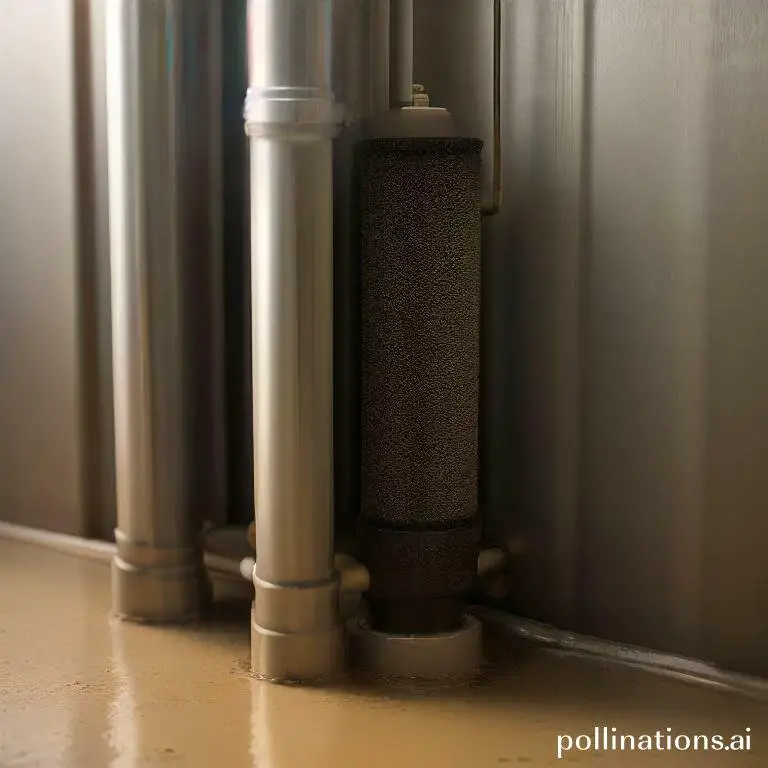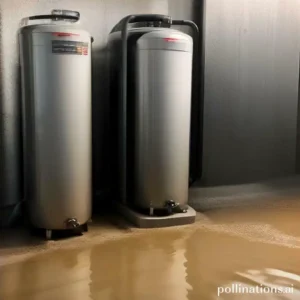
II. Regular maintenance, such as draining and flushing the tank, can help prevent sediment buildup and prolong the lifespan of the water heater.
III. If sediment buildup is severe, professional cleaning or replacement of the water heater may be necessary to ensure safe and effective operation.
Sediment removal is crucial for maintaining the efficiency and longevity of residential water heaters. Over time, minerals and debris can accumulate in the tank, causing decreased performance and potential damage.
Regular sediment removal ensures that your water heater operates at its optimal level, providing you with hot water when you need it. By removing sediment, you can prevent clogs, improve energy efficiency, and extend the lifespan of your water heater.
Attain the benefits of sediment removal and keep your water heater running smoothly.
What is Sediment Buildup in Water Heaters?
Sediment buildup in water heaters refers to the accumulation of mineral deposits and other solid particles that settle at the bottom of the tank over time. This buildup occurs as a result of the natural process of water heating and is a common issue in many water heating systems.
Causes of Sediment Buildup
There are several factors that contribute to the formation of sediment in water heaters:
- Hard water: Water with high mineral content, such as calcium and magnesium, is more prone to sediment buildup.
- Lack of regular maintenance: Failure to flush and clean the water heater regularly can lead to sediment accumulation.
- Inadequate filtration: Insufficient or ineffective filtration systems can allow sediment particles to enter the water heater.
Effects of Sediment Buildup on Water Heaters
The presence of sediment in water heaters can have several negative effects:
- Reduced heating efficiency: Sediment acts as an insulating layer, making it harder for the heating element to transfer heat to the water. This reduces the efficiency of the water heater and increases energy consumption.
- Increased risk of damage: Sediment buildup can cause overheating, which can lead to damage to the heating element or other components of the water heater.
- Shortened lifespan: The accumulation of sediment can accelerate corrosion and deterioration of the water heater, potentially reducing its lifespan.
To prevent sediment buildup and maintain the performance of your water heater, it is recommended to schedule regular maintenance, including flushing the tank to remove accumulated sediment. Additionally, installing a water softener or filtration system can help reduce the mineral content in the water and minimize sediment formation.
| Causes of Sediment Buildup | Effects of Sediment Buildup |
|---|---|
| Hard water | Reduced heating efficiency |
| Lack of regular maintenance | Increased risk of damage |
| Inadequate filtration | Shortened lifespan |
Signs that your water heater has sediment buildup
If you notice any of the following signs, it may indicate that your water heater has sediment buildup:
Noises from the water heater
One common sign of sediment buildup in a water heater is strange noises coming from the unit. These noises can range from popping or cracking sounds to rumbling or hissing sounds. The sediment that accumulates at the bottom of the tank can cause the heating element to overheat, resulting in these noises.
Reduced hot water supply
Another indication of sediment buildup is a reduced hot water supply. If you find that your showers are not as hot as they used to be or that you run out of hot water more quickly than before, sediment accumulation may be to blame. The sediment can create a barrier between the heating element and the water, reducing the efficiency of the water heater.
Discolored water
Sediment buildup can also lead to discolored water. If you notice that the hot water coming out of your faucets has a brown or rusty color, it is likely that sediment has accumulated in the water heater. This sediment can mix with the water and cause it to become discolored.
If you experience any of these signs, indispensable to address the issue promptly. Sediment buildup can not only affect the performance of your water heater but also decrease its lifespan. Regular maintenance, such as flushing the tank to remove sediment, can help prevent these problems and ensure your water heater continues to function effectively.
How to Remove Sediment from Water Heaters
Water heaters are essential appliances that provide hot water for various household activities. Over time, sediment can build up in the tank, affecting the heater’s performance and efficiency. To ensure optimal functioning and prolong the lifespan of your water heater, it is crucial to remove the sediment regularly. Follow these steps to effectively remove sediment from your water heater:
1. Turn off the water heater
Before starting the sediment removal process, make sure to turn off the water heater. This will prevent any accidents or injuries during the procedure.
2. Drain the tank
Locate the drain valve at the bottom of the water heater tank. Attach a hose to the valve and place the other end in a suitable drainage area. Open the valve and allow the water to drain completely from the tank. Sediment will be carried out with the water.
3. Flush the tank
Once the tank is drained, close the drain valve and turn on the cold water supply to the heater. This will help flush out any remaining sediment. Allow the water to run for a few minutes until it appears clear.
4. Refill the tank
After flushing the tank, close the cold water supply and remove the hose from the drain valve. Close the valve and ensure it is tightly sealed. Turn on the cold water supply again and allow the tank to refill.
5. Turn on the water heater
Once the tank is refilled, you can turn on the water heater. Follow the manufacturer’s instructions to relight the pilot light or restart the heating element. Allow the water heater to reach the desired temperature before using hot water.
Regularly removing sediment from your water heater will improve its efficiency, prevent clogs, and extend its lifespan. By heeding these simple steps, you can ensure that your water heater continues to provide hot water reliably for your everyday needs.

Preventing Sediment Buildup in Water Heaters
Sediment buildup in water heaters can lead to various issues, including decreased efficiency, reduced lifespan, and potential damage. To ensure the optimal performance and longevity of your water heater, taking preventive measures is essential. This article explores different methods to prevent sediment buildup and maintain the efficiency of your water heater.
1. Regular Maintenance
Regular maintenance is crucial for preventing sediment buildup in water heaters. Flushing the tank at least once a year helps remove accumulated sediments. To do this, follow these steps:
- Turn off the power supply to the water heater.
- Connect a garden hose to the drain valve located at the bottom of the tank.
- Place the other end of the hose in a suitable draining area or connect it to a floor drain.
- Open the drain valve and let the water flow until it runs clear.
- Close the drain valve and remove the hose.
- Turn on the power supply and allow the tank to refill.
Regular maintenance not only removes existing sediment but also helps identify any potential issues early on, preventing further damage.
2. Installing a Sediment Filter
Installing a sediment filter in the water supply line can significantly reduce sediment buildup. These filters trap particles and sediments, preventing them from entering the water heater. Regularly cleaning or replacing the filter ensures its effectiveness.
3. Using a Water Softener
Hard water contains high levels of minerals that contribute to sediment buildup. Using a water softener can help prevent this issue. Water softeners remove mineral ions, such as calcium and magnesium, through an ion exchange process, reducing the formation of sediment in the water heater.
| Sediment Buildup Prevention Methods | Benefits |
|---|---|
| Regular Maintenance | – Removes existing sediment – Identifies potential issues early |
| Installing a Sediment Filter | – Traps particles and sediments – Reduces sediment entry into the heater |
| Using a Water Softener | – Removes mineral ions – Minimizes sediment formation |

Importance of Hiring a Professional for Sediment Removal
Pertaining to sediment removal, it is crucial to rely on the expertise of a professional. Hiring a professional ensures that the process is carried out safely and efficiently, whilst also guaranteeing proper disposal of the sediment. Let’s navigate the key reasons why hiring a professional for sediment removal is of utmost importance:
Safety Concerns
The removal of sediment can be a hazardous task, especially if you lack the necessary knowledge and equipment. Professionals have the expertise to handle sediment removal safely, minimizing the risks associated with the process. They are equipped with the proper safety gear and follow industry-standard protocols to ensure a secure working environment.
Proper Disposal of Sediment
Disposing of sediment requires adherence to specific regulations and guidelines. Improper disposal can have detrimental effects on the environment and may result in legal consequences. Professional sediment removal experts have a thorough mastering of the proper disposal methods, ensuring that the sediment is handled and disposed of responsibly.
Expertise in Handling Water Heaters
Sediment buildup in water heaters can lead to reduced efficiency and potential damage. Professionals specializing in sediment removal possess in-depth knowledge of water heater systems and know how to effectively remove sediment without causing any harm. They can identify and address any underlying issues, ensuring the longevity and optimal performance of your water heater.
| Benefits of Hiring a Professional for Sediment Removal |
|---|
| 1. Safety |
| 2. Proper disposal |
| 3. Expertise in water heater handling |
Bottom Line
Regular sediment removal is crucial for maintaining the efficiency and longevity of residential water heaters. Neglecting this task can lead to reduced hot water supply, increased energy bills, and even premature failure of the unit. Homeowners should follow the manufacturer’s instructions and flush their water heaters at least once a year to remove accumulated sediment. Alternatively, they can hire a professional plumber to perform the task. Additionally, installing a sediment filter can help prevent sediment buildup and prolong the life of the water heater. By taking these simple steps, homeowners can ensure that their water heaters continue to provide reliable hot water for years to come.
In conclusion, sediment removal is an essential aspect of water heater maintenance that should not be overlooked. By staying on top of this task, homeowners can avoid costly repairs and replacements and enjoy uninterrupted hot water supply. So, make sure to schedule regular sediment removal for your residential water heater and keep it running smoothly.
Read More:
1. Sediment Removal In Tankless Water Heaters: Step-By-Step Guide
2. Sediment Removal And Water Heater Expansion Tank Maintenance










